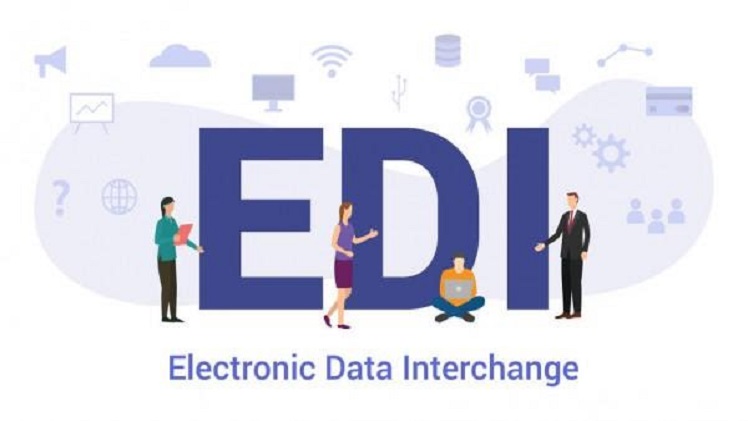Nowadays, we hardly send physical letters. Instead, we all are very much accustomed to electronic mailing systems. It saves our time and sends the information quicker than before, so people find it more attractive in email.
The primary purpose of sending email is to exchange essential information or messages between common people as well as official entities. Nevertheless, through email, sending a high volume of data is impossible. As a result, Electronic Data Interchange (EDI) came into existence and drove out all problems of exchanging important documents in bulk.
So, suppose you want to save money on courier charges for sending physical documents in bulk and want to complete the entire process within a minute. In that case, EDI installation is really a price-worthy decision. If you are thinking about the expenses, then we would say even if it costs high later, you may discover its cost-saving benefits.
Therefore, without waiting much, apply for small payday loans, which are the best, no credit check loans. These will be approved within the same day. However, before you install, let us tell you everything about the EDI process.
What is the Electronic Data Interchange process?
Through which process, one organisation can send important official documents to another entity using computers and standard format, known as EDI. Generally, this process is primarily used by business organisations who needed to send lots of data between themselves. After the introduction of the EDI process, formal paper-based document exchange has omitted.
It provided lots of benefits such as saving cost and time, increasing safety measures, keeping the confidentiality of those documents, etc. Before the invention of such technology, it took a long time to send the necessary documents, even within the same state. After the introduction of EDI, the relationship between business partners has also developed as it takes little time to send the document from one entity to another.
- Medium of transfer through EDI
The electronic transformation will definitely complete through a medium. Here the medium is the computer. Using EDI, one organisation can send essential data within a fraction of a second from one computer to another computer. Therefore, it is a computer-to-computer transfer.
You may think that then what the difference between email and EDI is. Emails are written by human beings, whereas EDI is such a process that sends data without the intervention of the human brain. It automatically sends the data from one recipient to another.
There is no scope for creating errors while transferring data through EDI. It utilises the order management system, so the document flows straight from the sender’s computer to the receiver’s computer without interruption. In between two computers there works a particular software and translator.
- Standard format of EDI
Unlike the human brain-computer can’t understand machine language. Therefore, there should be a specific format that the EDI system follows to comprise data. As a result, machines can understand what is written there and pass the formatted data to another computer. Some of the specific formats include,
- Undoubtedly the increasing demand of this process compels the system to evolve so many standardised formats. For example, ANSI, EDIFACT, TARADACOMS etc. Now, there are also several versions of these formats like EDIFACT D12, Release A etc.
There is a golden rule of using this standard format. Computer received documents instead of human beings, so those documents need to be present with good readability. If two business organisations use two different formats, it will become impossible to read encrypted data properly.
Therefore, business entities that use the EDI system must utilise the same standard format for transmitting data. Only then two recipients can easily communicate with each other through the EDI process.
- Apart from standard format, there is also the necessity of a translator. Without a translator, computers can’t understand encrypted data. Even after sharing the same form, there is a necessity for a translator.
However, while choosing a translator, an entity may choose because it is not necessary to use the same translator. Some companies may like to utilise their own developed in-house software. At the same time, others may want to use popular translators for the transcription of the document.
How does the Electronic Data Interchange system work?
It includes three steps to complete the entire EDI process. While the first step includes data preparation, the second step comprises the translation of collected documents. The last and final stage includes connecting and transmitting to recipients.
- Step 1: Preparation of data
At this initial stage, the preparation of data takes place. Without collecting data, it is impossible to send them to recipients. Therefore, employees of an organisation need to enter essential data into the system. After that, collected data needs to export from PC to database. Then it becomes ready to process through EDI.
- Step 2: Translation of collected data
After the encrypted data is processed through the EDI channel, then there comes the role of translation. Without passing those collected data through a translator, it is impossible to transform them into the internal document format.
- Step 3: Connecting and transmitting to recipients
Once the translation process completes, then it is time to transmit those data to the intended recipient. There are two types of connecting methods like AS2 and EDI network providers. One business entity may choose anyone from them. After establishing connection successfully, data transmission completes.
Therefore, EDI is quite simple processes that involves fewer human beings and transmit the collected set of data within few minutes.
Description:
Electronic Data Interchange is a new technology to transmit data from one business entity to another organisation. This entire process includes three steps.

